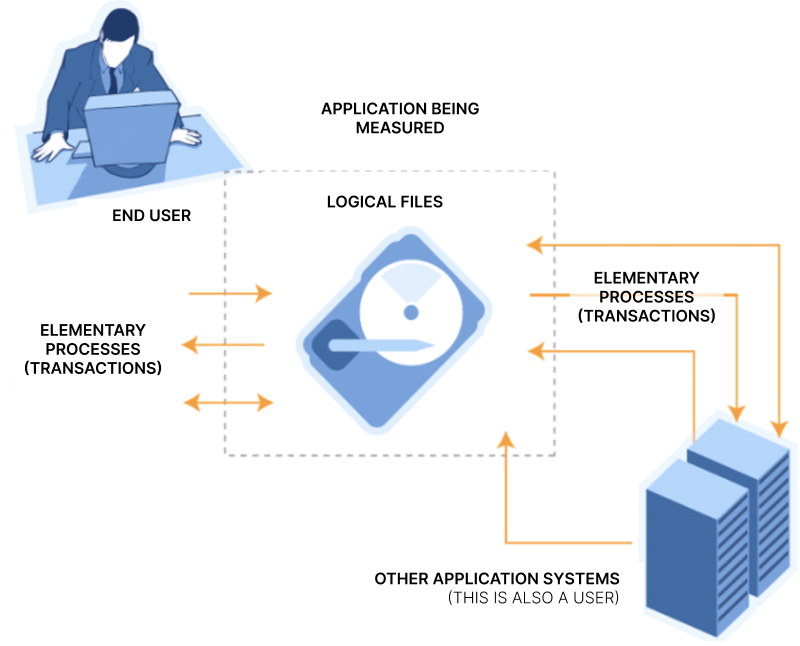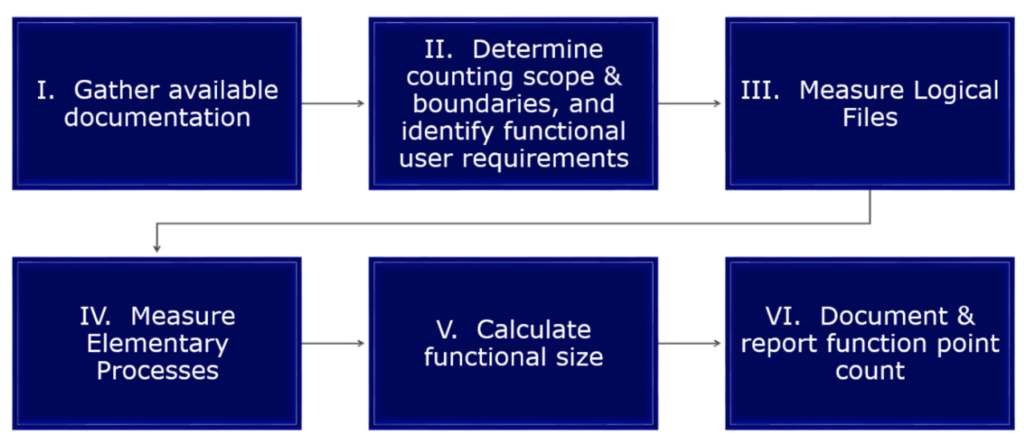10 Step Estimation Process Sample Checklist
View our 10 Step Estimating Process Checklist. This checklist should be tuned to the individual company’s needs and suggestions.

In software development, accurately measuring the size and complexity of your applications is crucial for success. One powerful and widely used method to achieve this is Function Points. In this blog, we’ll examine the concept of Function Points, explore how they work, and uncover the remarkable benefits they offer to organizations. Discover how this approach can elevate your project management and strategic planning to new heights.
Table of Contents
Function Points are a unit of measurement used to express the size of software applications in terms of functional user requirements. Just as pounds measure weight and miles measure distance, Function Points measure the size of an application, independent of the programming languages and technologies used for implementation. This universality makes Function Points an invaluable technique for comparing applications built on different platforms or written in various languages.
Function points were first introduced in the mid-1970s by Allan Albrecht, who was tasked with finding new ways to measure application development productivity. His work culminated in a paper titled “Measuring Application Development Productivity,” presented at a software conference in California in 1979. This marked the first exposure of Function Points to the international software community.
In 1984, the International Function Points Users Group (IFPUG) was established to maintain the function points standards and provide training and certification. By 2009, function points became an international ISO standard for software functional size.
Function Points focus on the functional user requirements of a software application. These requirements describe what the application should do in terms of data transfer, data transformation, storage, data processing, retrieval, and presentation. Function Points do not measure non-functional requirements such as quality, reliability, usability, performance, or security. There are other techniques that can be used for these types of requirements, and we will be covering them in a separate blog (stay tuned!)
To measure the size of a software application using function points, we need to understand its components. These include:
The figure below illustrates these concepts:

IMPORTANT: In Function Points, external users are defined as anything or anyone that interacts with an application. These include human users, other software applications, and physical devices (keyboards, monitors, sensors, buttons, etc.)

After that, we are ready to measure the Logical Files (Step III) and Elementary Processes (IV). These are the core steps of the process. It is here where the user requirements are analyzed to identify the elements of the application that contribute to the functional size. Once the components are identified, we calculate the total functional size (Step V) and finally produce a nice report with the results of the count and the major assumptions we made (STEP VI).
OK, we have a function point count… now what?
Function Points can be used in various ways:
Function Points offer a standardized, technology-independent method for measuring the functional size of software applications. This measurement is crucial for project management, cost estimation, and strategic planning. By understanding and utilizing Function Points, organizations can ensure more accurate and effective management of their software development projects.
Galorath is dedicated to helping organizations measure and manage their software development projects with precision. We provide tools and methodologies to ensure that your projects are on track, on budget, and aligned with your strategic goals.
We hope you found this information valuable.
10 Step Estimation Process Sample Checklist
View our 10 Step Estimating Process Checklist. This checklist should be tuned to the individual company’s needs and suggestions.
Estimating Total Cost of Ownership (TCO)
Find out how you can use Total Cost of Ownership (TCO) model to create an estimate which includes all the costs generated over the useful life of a given application.
Should Cost Analysis
Learn how Should-Cost Analysis can identify savings opportunities and drive cost efficiency in procurement and manufacturing processes.
ROM Estimate: The First Step Towards a Detailed Project Plan
Find out what ROM (rough order of magnitude) estimate is and why is it a crucial element of every project planning cycle.
Software Maintenance Cost
Find out why accurate estimation of software maintenance costs is critical to proper project management, and how it can make up to roughly 75% of the TCO.